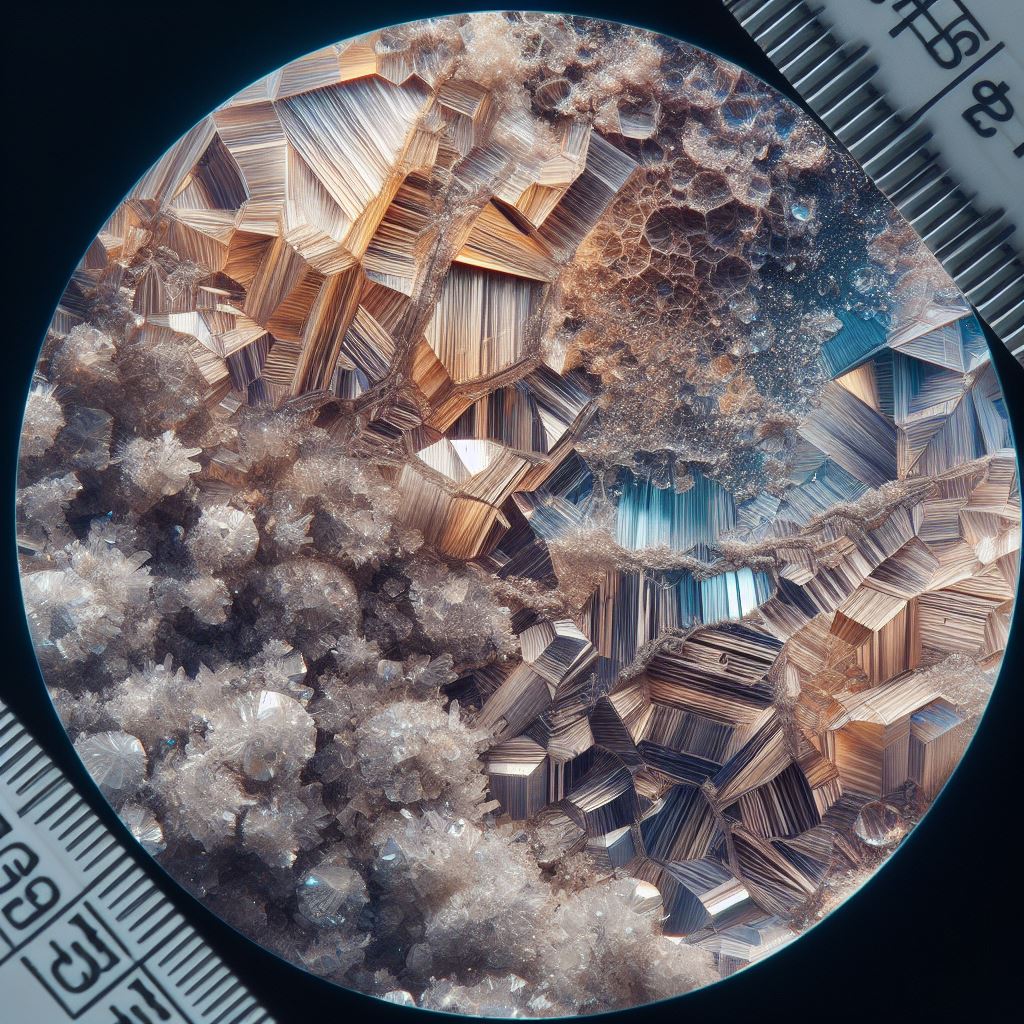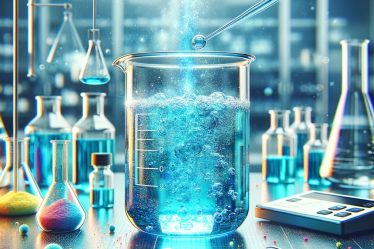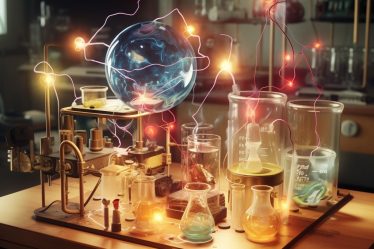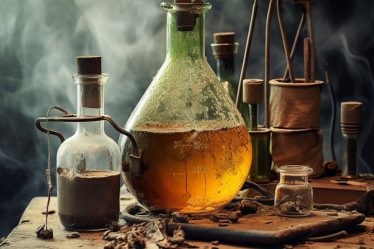
Have you ever wondered what is a mineral and why minerals are so important in chemistry and health? Minerals are more than just elements found in rocks; they’re essential for our bodies to function properly. In chemistry, minerals appear in everything from the soil to the very structure of our world. And when it comes to our health, they play a crucial role in everything from building strong bones to regulating our heartbeat. In this guide, we’ll explain what minerals are, how they differ from vitamins and rocks, and why they matter so much in our daily lives.
Whether you’re a student, a curious learner, or someone looking into tutoring for a deeper understanding, you’ll find valuable insights into the world of minerals here.
- What is a Mineral: Differences from vitamins in chemistry.
- Minerals in Health: Roles and dietary sources.
- Rare Earth Minerals: Unique properties and uses.
- What is the Hardest Mineral: Chemical composition and hardness.
- Mineral Reserves and Oils: Industry significance and applications.
Read more topics and expand your chemistry horizons! Our World of Chemistry offers a plethora of free educational blogs.
Defining Minerals: Essential Elements in Chemistry
Minerals are naturally occurring, solid substances with a specific chemical composition and crystal structure. Unlike artificial substances, minerals form through geological processes, shaping much of the Earth’s crust. Each mineral possesses a unique chemical formula, like quartz (SiO₂), known for its consistent silicon and oxygen ratio. Not all minerals have a fixed composition; some display variations within certain limits, like siderite, which ranges in metal content. These diverse chemical compositions and structures make minerals a cornerstone in the study of geology and chemistry.
Characteristics of Minerals in Nature
In nature, minerals are identified by their distinct properties. They have a well-ordered atomic arrangement, contributing to their physical characteristics like hardness, luster, and cleavage. For instance, talc is soft and easily scratched, while quartz is harder. Their crystal structures, seen in the orderly pattern of atoms, molecules, or ions , are key to their identification and classification. This highly ordered structure sets minerals apart from amorphous substances like glass, which lack such organization.
Minerals vs. Rocks: Understanding Key Differences
While often confused, minerals and rocks are distinctly different. A mineral is a single substance with a definite composition and structure, like calcite. Rocks, however, are aggregates of minerals and don’t require a specific chemical makeup. For example, limestone is predominantly calcite, while granite comprises minerals like feldspar and quartz. This distinction is crucial in geology, as studying rocks (petrology) and minerals (mineralogy) requires understanding their different compositions and formations. Rocks can offer insights into the minerals they contain, like clay minerals forming from weathered feldspar.
Learn about chromatography and solutions and mixtures.
Dietary Minerals: Roles and Sources
Minerals are vital in our diet and environment and crucial in maintaining our health. They work alongside other nutrients to ensure our body functions properly. Here’s a look at essential dietary minerals and their familiar sources:
- Calcium: Essential for bone health and muscle function. It is found in dairy products, dark green leafy vegetables, and nuts.
- Iron: Critical for oxygen transport in the blood. Present in meat, poultry, fish, and legumes.
- Magnesium: Aids in enzyme activation and energy production. Found in whole grains and leafy green vegetables.
- Potassium: Important for nerve and muscle function. Sources include meats, fruits, vegetables, and dairy products.
- Zinc: Supports immunity and growth. Common in meat, fish, poultry, and cheese.
- Iodine: Necessary for thyroid function. It is found in fish and dark, leafy green vegetables.
Understanding these minerals and their sources can help you make informed choices about your diet. If you want to deepen your knowledge about the role of minerals in chemistry and health, considering a tutor or engaging in tutoring sessions can be immensely beneficial. A tutor can provide personalized guidance and help you explore these concepts in greater detail.
Mineral Composition: Chemical Insights
Minerals are defined by their unique chemical makeup, characterized by specific elements arranged in an orderly pattern. This composition determines their properties and functions. For example, quartz, a common mineral, is composed of silicon dioxide (SiO₂), with silicon and oxygen in a fixed 1:2 ratio. However, some minerals, like siderite, have more variable compositions due to the inclusion of different metal ions.
In contrast, vitamins are organic compounds with diverse structures, essential for various bodily functions but not necessarily sharing the uniformity of minerals’ atomic arrangement. To illustrate these differences, here’s a comparison:
Minerals:
- Quartz (SiO₂): Silicon + Oxygen
- Calcite (CaCO₃): Calcium + Carbon + Oxygen
Vitamins:
- Vitamin C (C₆H₈O₆): Carbon + Hydrogen + Oxygen
- Vitamin D (C₂₇H₄₄O): Carbon + Hydrogen + Oxygen
This comparison highlights minerals’ more structured, inorganic nature than vitamins’ organic, varied composition. Don’t worry; you’re not the only one struggling with minerals. It’s a complicated area requiring much understanding and theoretical knowledge. A private chemistry tutor can assist you. You can also turn to a private teacher who offers individual lessons in chemistry or biochemistry.
Introduction to Carbohydrates, Lipids, Fatty Acids, and Nucleic Acids.
Minerals and Vitamins: Biochemical Differences
Minerals and vitamins are fundamental to our health, but they differ significantly in their biochemical roles and functions.
Minerals are Inorganic Elements
Minerals are inorganic elements that come from the earth and water and are absorbed by plants or eaten by animals. Their primary function is to ensure the proper functioning of the body. They are crucial in building strong bones and teeth, controlling body fluids inside and outside cells, and turning food into energy.
Vitamins are Organic Compounds
Conversely, vitamins are organic compounds made by plants and animals, which can be broken down by heat, acid, or air. They are crucial for energy production, immune function, blood clotting, and other functions. Unlike structural minerals, vitamins are more about function. For example, vitamin D helps the body absorb calcium, while vitamin C helps to repair tissues and enzymatic production of certain neurotransmitters.
Vitamins vs. Minerals in Body Functions
Vitamins and minerals, while both essential, play different roles in body functions and health. Minerals like calcium and phosphorus are vital for building bones, while iron is needed for transporting oxygen in the blood. On the other hand, vitamins like vitamin A aid in maintaining healthy vision and skin, vitamin C is essential for the growth and repair of tissues, and vitamin D helps absorb calcium.
Rare Earth Minerals: Unique Properties and Uses
Rare earth minerals, a group of 17 elements, have unique magnetic, luminescent, and electrochemical properties that make them crucial in modern technologies. They are used to manufacture a wide range of products, from smartphones and televisions to electric vehicles and wind turbines.
For instance, neodymium and dysprosium are vital in producing strong, permanent magnets used in electric motors. Europium and terbium are important in creating fluorescent lighting. Their unique properties and widespread applications underscore the importance of minerals in advancing technology and supporting sustainable development.
Explore Halogenides, Sulfides, and Hydroxides.
Mineral Reserves and Oils: Earth’s Hidden Chemistry
What Is a Mineral Reserve or a Mineral Deposit?
Mineral reserves and deposits are concentrations of minerals in the Earth’s crust that have significant economic value. These reserves are crucial in various industries for extracting essential materials like iron, copper, and rare earth elements. Identifying and managing these reserves involves understanding their size, grade, and accessibility. In geology, studying these deposits provides insights into the Earth’s formation and processes. They are the backbone of sectors like construction, technology, and manufacturing, where they are processed into vital components and products.
What Is Mineral Oil?
Mineral oils derived from petroleum are distinct from natural minerals. These oils are used extensively in chemistry and have various applications, including lubricants, heat transfer, and electrical insulation. Unlike natural minerals, mineral oils are organic compounds consisting of hydrocarbons. Their versatility and stability make them crucial in industrial and pharmaceutical applications, where they serve as bases for lubricants, coolants, and cosmetics.
The Hardest Minerals: What is the Hardest Mineral?
The hardness of minerals, an essential aspect of their identification and use, is primarily determined by their chemical structure and bonding.
The hardest known mineral, diamond, owes its unparalleled hardness to a strong covalent bond between carbon atoms arranged in a crystal lattice. This structure makes breaking the bonds and scratching the surface incredibly difficult.
Similarly, corundum, the mineral form of sapphire and ruby, gets its hardness from the strong ionic and covalent bonds between aluminum and oxygen atoms.
The type of chemical bonding and the arrangement of atoms within the crystal lattice are critical factors that determine a mineral’s hardness, influencing its applications in various industries, from jewelry to cutting tools.
Minerals and Vitamins with a Tutor
As we wrap up, it’s clear that minerals and vitamins are more than just scientific terms; they’re part of our everyday life and health. This brief tour through their world might have been technical at times, but I hope it’s also sparked your interest. Maybe you’re looking at your diet differently or considering how minerals impact technology. If this has piqued your curiosity and you’re keen to learn more, remember, there’s always room to grow your understanding through a tutor, a class, or just your exploration. The world of minerals and vitamins is vast and always inviting new explorers.
Are you looking for a chemistry tutor? Enter “chemistry tutor Glasgow” or “chemistry teacher Sheffield” on your preferred tutoring platform, such as meet’n’learn, to find a teacher who can meet your specific needs.
If you thrive in group learning environments, search “chemistry classes London” or “chemistry lessons Manchester” online to discover local schools offering chemistry lessons.
Check out 8 Exciting Science Experiments for Kids and unravel The Greatest Discoveries in Biology.
FAQ: What Is a Mineral and How It Differs from Vitamins
1. What Is a Mineral in Chemistry?
Minerals are natural, solid substances with a specific chemical composition and crystal structure formed through geological processes.
2. What Is the Difference Between a Rock and a Mineral?
A rock is an aggregate of minerals without a specific chemical composition, whereas a mineral is a single substance with a definite chemical structure.
3. What Are Minerals in Food?
In food, minerals are inorganic compounds essential for various bodily functions, including building bones and regulating heartbeats.
4. What Is a Trace Mineral?
Trace minerals, like iron and zinc, are required in small amounts in our diet but are crucial for health.
5. What Is the Difference Between a Vitamin and a Mineral?
Vitamins are organic compounds necessary for bodily functions, while minerals are inorganic and contribute to structural and regulatory processes.
6. What Is a Mineral Deposit?
A mineral deposit is a concentration of minerals in the Earth’s crust with economic value, often mined for industrial use.
7. What Is Mineral Oil Used For?
Mineral oil, derived from petroleum, is used in various applications, including as a lubricant, in cosmetics, and for medicinal purposes.
8. What Is the Hardest Mineral?
The hardest known mineral is diamond, renowned for its strong covalent carbon bonds, making it highly resistant to scratching.
Are you interested in other subjects? Read top free study guides for Biology, English, French, and Music.
References:
1. ThoughtCO
2. Britannica
3. Wikipedia



